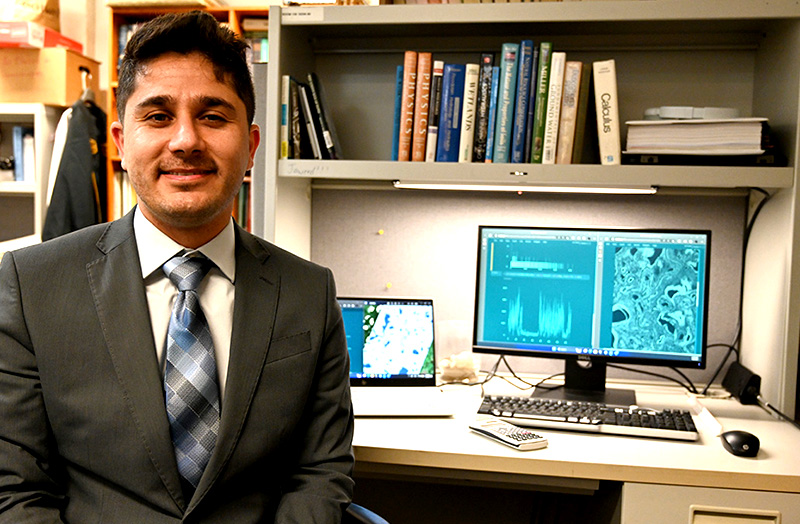May 07, 2023

He grew up in a water-strapped village in Afghanistan, worked as a water engineer who helped similar communities and wants to continue to conduct research around environmental problems while teaching future generations.
In the meantime, Jaweed Nazary will spend his summer working at NASA.
Nazary won’t go to outer space, but rather will use photos from space satellites to help analyze moisture levels in a community in western Alaska. It’s part of NASA’s DEVELOP National Program, which trains students to leverage Earth observation data to investigate environmental challenges.
“This project was made for me,” said Nazary, a PhD student in civil and environmental engineering. “Supporting a small community’s resilience in the face of climate change is very important to me. We have this amazing technology and science that can be used to help a lot of people.”
Next month, he’ll head to Athens, Georgia, where he’ll spend 10 weeks analyzing sophisticated satellite imagery to see how rising sea levels and melting permafrost are impacting drainage networks in Unalakleet, Alaska. The community is at risk of coastal erosion and sea-level rise, and as villagers consider leaving the area, findings from the work will help determine new locations less at risk.
Specifically, Nazary will be using synthetic aperture radar, or SAR, data from Sentinel-1, a European Space Agency satellite that captures large images using radio waves that bounce off the Earth’s surfaces. Because it doesn’t rely on light, SAR technology can collect photos at night and through clouds. These images come with data about moisture levels and other environmental characteristics.
Nazary has been using SAR in his graduate research with Associate Professor Kathleen Trauth as they determine locations to establish and characterize wetlands. As part of that work, he’s been anticipating the launch of a new NASA satellite, NISAR, equipped with SAR techniques and technology. The satellite is expected to capture even clearer images.
“That’s how I came across this opportunity,” Nazary said. “I’m excited about the new satellite and I visit NASA’s website often for updates and announcements. That’s where I saw information about the DEVELOP program and that they were specifically looking for someone to work on drainage issues. I’m excited to be part of it.”
Gain a one-of-a-kind educational experience at Mizzou Engineering. Apply today!